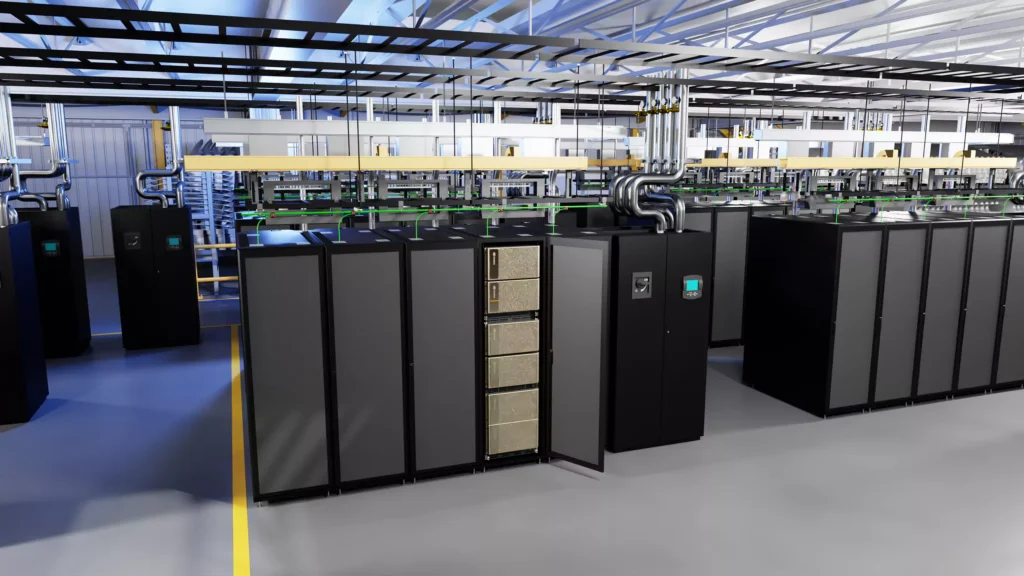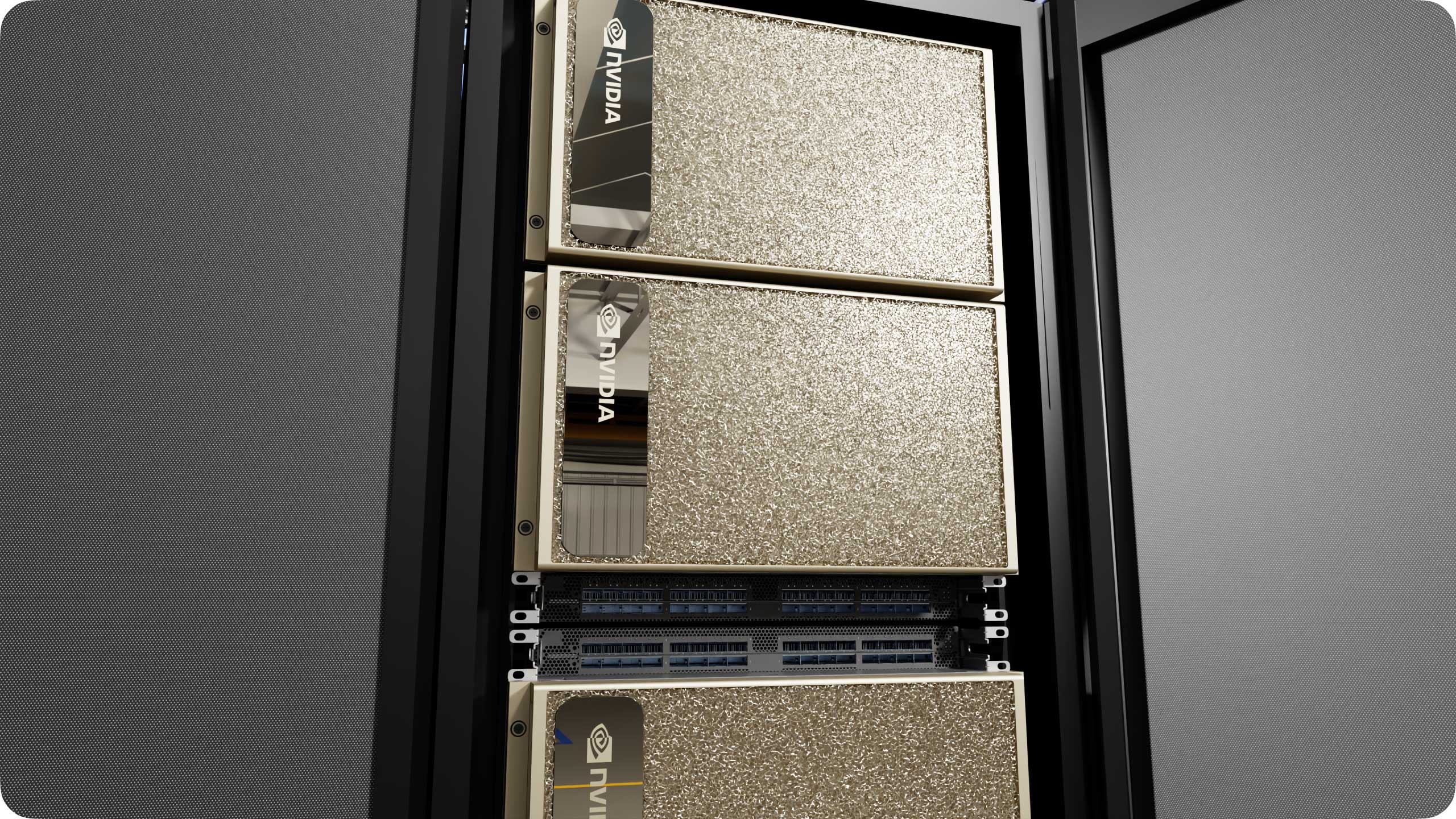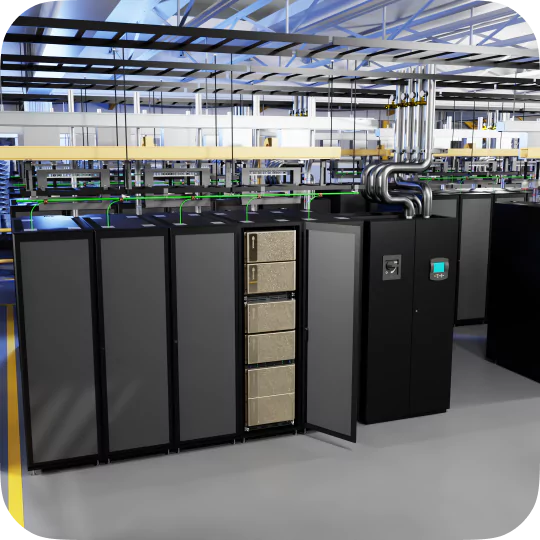With AI workloads driving unprecedented infrastructure demand, data center operators are under pressure to build smarter and scale faster.
Using data center digital twins offers a full lifecycle solution, enabling teams to simulate and optimize every phase of development, from early planning all the way to decommissioning.
What is a data center digital twin?
A data center digital twin is a virtual 3D replica of a real-world data center, built to simulate and optimize its design before construction or operation begins. It brings together models of interconnected systems—space, power, cooling, racks, storage, cabling, and networking—into a single collaborative environment.
Traditionally, engineers use separate tools to design different parts of the data center, which can lead to miscommunication and inefficiencies. A digital twin solves this by using platforms like NVIDIA Omniverse to import 3D models from various applications into a unified format (USD). This creates a high-fidelity, photorealistic environment where teams can visualize and refine every element of the data center—down to the rack and cable level.

A data center digital twin isn’t just a design tool—it’s a reusable, renewable asset that supports the full lifecycle of a facility.
Key Use Cases for Data Center Digital Twins
1. Streamlining Design and Collaboration
Designing a modern data center requires coordination across mechanical, electrical, and network engineering teams. Digital twins created in platforms like NVIDIA Omniverse allow these teams to collaborate on a single, unified model, integrating data from tools like PATCH MANAGER (for cabling) and CAD software. This minimizes misunderstandings, speeds up decision-making, and reduces costly design errors.
Beyond technical collaboration, the same data center digital twin can also support sales and marketing teams. For example, using the technology to visualize co-location offerings for potential tenants, sales and marketing can better engage customers.
2. Simulating and Optimizing Performance
Cooling and airflow are mission-critical in AI-ready environments. Tools like Cadence Reality, NVIDIA Modulus APIs, and Ansys solvers can be integrated into digital twins to simulate:
- Airflow distribution
- Liquid-cooling system efficiency
- Thermal behavior of racks and GPU clusters
These simulations help teams test performance under load and optimize energy usage before physical systems are installed.
3. Accelerating Deployment
Converting lidar scans into 3D meshes allows teams to create and validate an accurate digital version of existing facilities. This is especially valuable for retrofitting legacy data centers or rapid deployment of new builds. Consequently, organizations can significantly reduce time-to-market and avoid unexpected infrastructure issues.
4. Enhancing Energy Efficiency
Energy consumption is a major concern. According to McKinsey, some data centers may reach 30 kW/rack by 2027, while training models like ChatGPT already demand 80+ kW/rack. This makes cooling system design critical.
Digital twins allow teams to evaluate liquid cooling vs. air cooling and simulate the impact of different systems on power usage effectiveness (PUE). Some operators have reported up to 10% improvements in PUE by switching from traditional to liquid cooling—optimizations that can be tested virtually in advance.
5. Planning for Scalability, Upgrades, and Future Readiness
Data centers must be designed to scale, but retrofitting later can be costly. However, digital twins help plan around boundary conditions such as:
- Rack spacing and airflow paths
- Power routing and UPS capacity
- Cooling distribution and room layout
With this foresight, teams can create environments that support future growth and technology integration without major rework. This capability is crucial for AI, where hardware changes quickly and deployment needs can shift overnight. Operators can also use data center digital twins to test and validate upgrades every 3-4 years, as well as map assets and plan removals for decommissioning.
Partner with Younite
Building on NVIDIA’s digital blueprint for next-generation data centers, Younite is redefining what’s possible in next-gen data center development. By integrating cutting-edge tools for simulation, design and infrastructure planning, Younite provides advanced solutions for rapid deployment, improved performance, and increased energy efficiency in their data center projects.
Interested in designing, simulating and optimizing your data center with Younite?
Let’s start a conversation today →
About the author
Sami Heinonen
Sami is a visionary technology leader and innovator with 30+ years of experience in the internet and immersive realities. As CTO of XR at Younite AI, he specializes in NVIDIA Omniverse and XR, bridging cutting-edge technology with real-world use cases.



